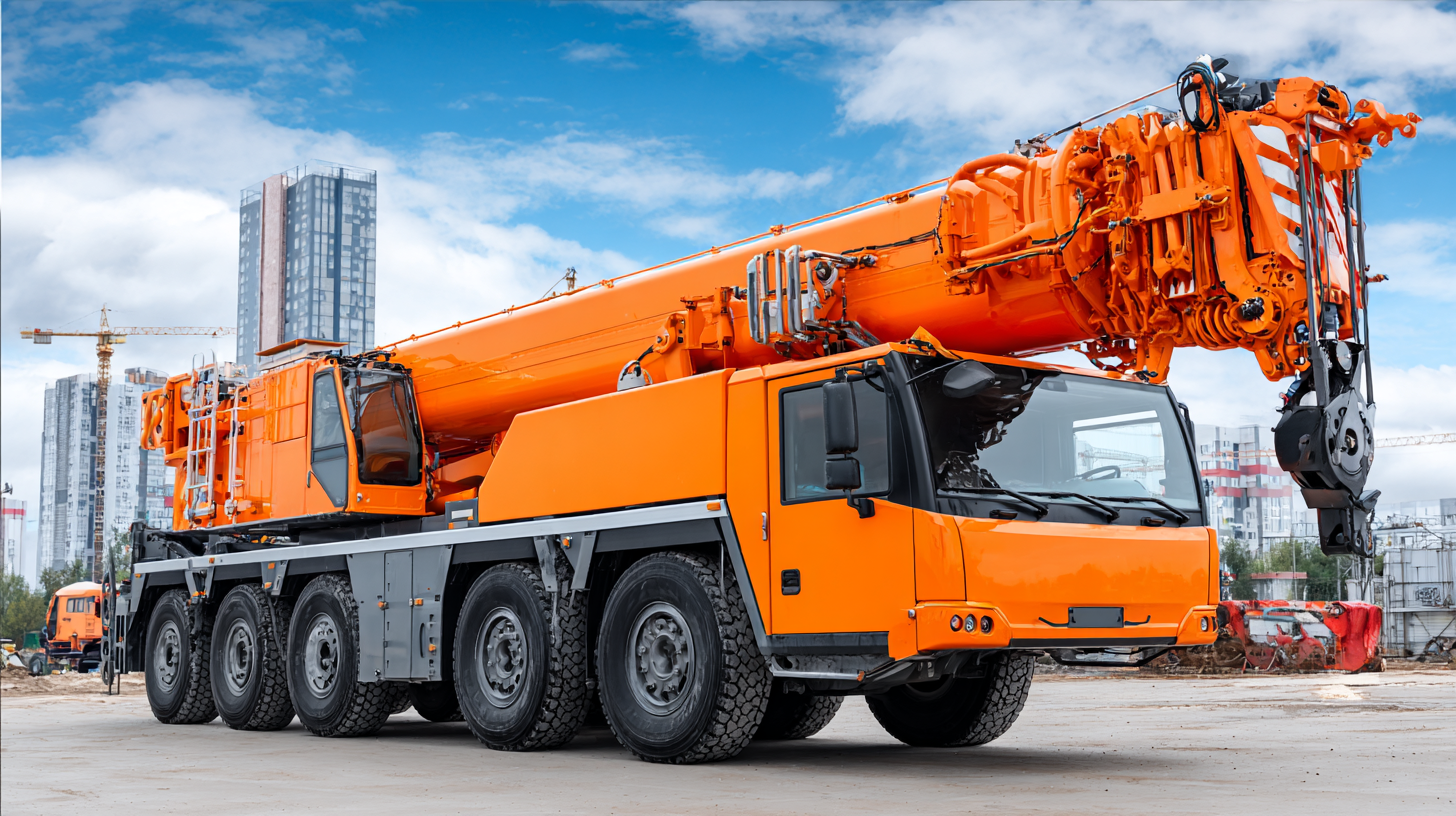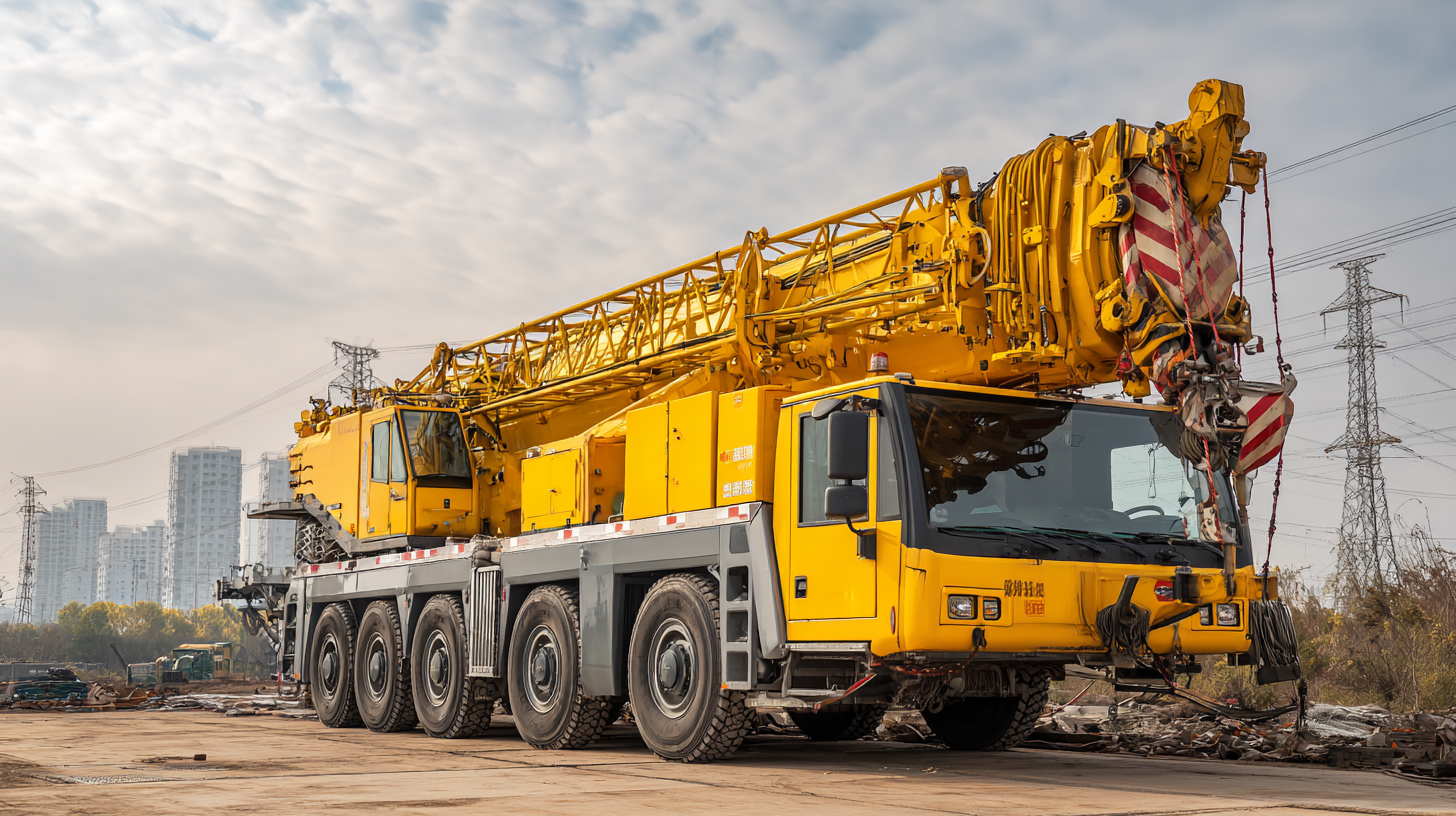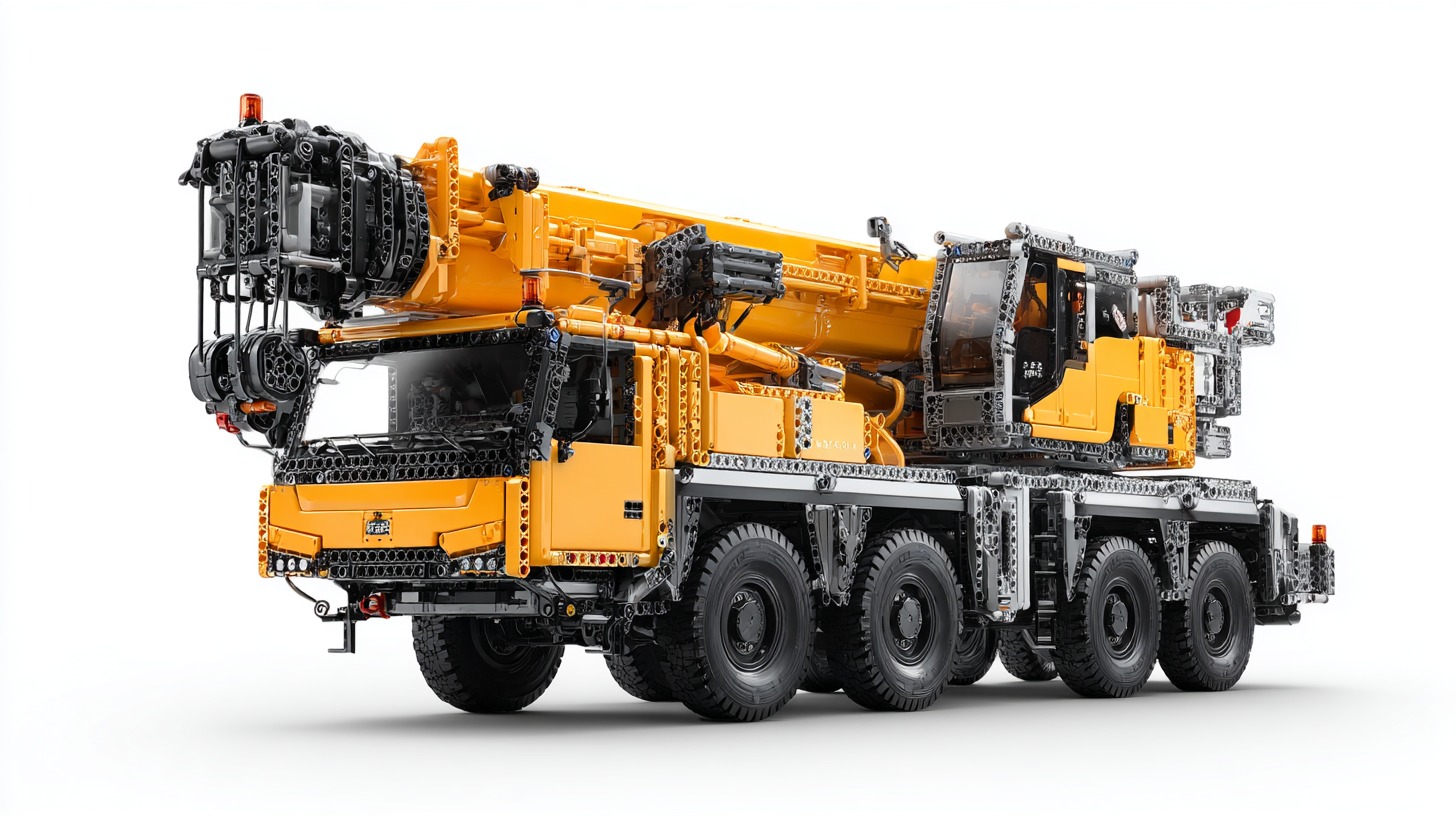In the ever-evolving landscape of construction and transport, maximizing efficiency has emerged as a pivotal focus for industry leaders. The integration of hydraulic cranes has proven to be a game-changer, with data from the International Construction and Transport Report (2022) indicating a significant increase in productivity attributed to these robust machines. Hydraulic cranes are essential in lifting and relocating heavy materials, making them indispensable in modern construction scenarios. According to industry forecasts, the global hydraulic crane market is expected to grow by 5.2% annually, driven by the rising demand for enhanced operational efficiency and safety standards.

As construction projects become increasingly complex, the innovations surrounding hydraulic crane technology are becoming more critical. A recent survey conducted by the Construction Equipment Association highlighted that 75% of contractors believe that advanced hydraulic crane solutions directly correlate with reduced project timelines and costs. This reinforces the notion that understanding how to optimize the use of hydraulic cranes will not only benefit operational workflows but also contribute significantly to sustainable practices within the industry. With the next generation of hydraulic cranes offering smarter controls and improved energy efficiency, stakeholders must stay informed about hydraulic crane advancements to capitalize on these developments effectively.
 Hydraulic cranes have revolutionized the construction and transport sectors, combining innovative technology with the need for efficiency. Today's hydraulic crane systems utilize advanced hydraulics to provide superior lifting power while minimizing energy consumption. According to a recent report by MarketsandMarkets, the global hydraulic crane market is expected to grow from $11.1 billion in 2021 to $15.5 billion by 2026, driven by increased construction activities and demand for automation in material handling.
Hydraulic cranes have revolutionized the construction and transport sectors, combining innovative technology with the need for efficiency. Today's hydraulic crane systems utilize advanced hydraulics to provide superior lifting power while minimizing energy consumption. According to a recent report by MarketsandMarkets, the global hydraulic crane market is expected to grow from $11.1 billion in 2021 to $15.5 billion by 2026, driven by increased construction activities and demand for automation in material handling.
The advancements in hydraulic crane technology include the integration of IoT (Internet of Things), which allows for real-time monitoring and diagnostics. This technology not only enhances operational efficiency but also improves safety by providing operators with critical data instantaneously. A study by the International Journal of Advanced Engineering Research and Science highlights that cranes equipped with smart sensors can reduce operational downtime by up to 30%, significantly impacting project timelines and costs. As the industry continues to embrace these innovations, the future of hydraulic cranes looks promising, paving the way for increased productivity and safety in construction and transport.
Hydraulic cranes have become indispensable in both the construction and transport sectors, facilitating a range of applications that demand precision and efficiency. According to a report by MarketsandMarkets, the global hydraulic crane market is projected to grow from USD 36.2 billion in 2022 to USD 48.5 billion by 2027, demonstrating a compound annual growth rate (CAGR) of 6.1%. This growth is driven by the increasing demand for heavy lifting capabilities in urban construction projects, where hydraulic cranes excel at handling large-scale materials in confined spaces.

In construction, hydraulic cranes are pivotal in erecting skyscrapers and other large structures, allowing for the seamless placement of steel beams and precast concrete elements. They are particularly effective in dynamic environments where versatility is crucial. Moreover, the transport sector relies on these cranes for loading and unloading cargo, enhancing supply chain efficiency. A report by Technavio indicates that the transportation logistics market is expanding, with demand for hydraulic cranes in port operations and inland logistics increasing. This reflects an overarching trend towards automation and improved operational efficiency, showcasing hydraulic cranes as a key technology in both sectors.
In the ever-evolving landscape of construction and transport, implementing best practices for hydraulic crane operations is crucial for maximizing efficiency. First, regular maintenance of cranes can significantly reduce downtime and enhance performance. Scheduling routine inspections and employing predictive maintenance techniques can prevent unexpected failures and ensure that machines operate at optimal efficiency. This proactive approach not only extends the lifespan of the equipment but also contributes to a safer work environment.
Additionally, training operators on the latest technologies and operational techniques plays a pivotal role in boosting efficiency. Well-trained personnel are equipped to utilize cranes more effectively, enabling them to navigate complex tasks with precision and speed. Incorporating simulation-based training and ongoing education ensures that operators stay updated on best practices and safety protocols. By investing in human capital, organizations can achieve substantial gains in productivity and operational efficiency while minimizing the risks associated with crane operations.
In the construction and transport sectors, the safety of hydraulic crane operations is paramount to ensuring efficient and accident-free work environments. According to a report by the Occupational Safety and Health Administration (OSHA), approximately 50% of all crane-related accidents can be attributed to operator error, underscoring the necessity of stringent safety protocols. Implementing comprehensive training programs that emphasize safety measures not only enhances operational efficiency but also significantly reduces the likelihood of incidents on site.
Moreover, integrating advanced technology such as load monitoring systems and improved signaling methods can further enhance safety during hydraulic crane operations. The Crane Certification Association of America (CCAA) states that using these technologies can lower accident rates by nearly 30%. This integration ensures that operators have real-time visibility into the crane’s performance and load conditions, which is crucial for preventing overload situations. By prioritizing safety protocols and embracing technological advancements, the construction and transport sectors can maximize efficiency while safeguarding their workforce.
The construction and transport sectors are poised for transformative advancements in hydraulic crane design and functionality. Innovations in materials, such as lightweight composites, enhance the cranes’ strength-to-weight ratio, allowing for greater lifting capacities without compromising stability. Moreover, incorporating smart technology, like IoT sensors and AI-driven analytics, enables real-time monitoring and predictive maintenance, significantly reducing downtime and operational costs.
Tips: To stay ahead in this rapidly evolving landscape, companies should invest in training their workforce on emerging technologies. Regularly updating software and hardware through scheduled upgrades ensures that cranes remain at peak performance and efficiency. Additionally, adopting modular designs can allow for easier upgrades and customization to meet varying project demands.
As the industry progresses, enhanced safety features will become increasingly vital. Innovations like automated stabilization systems and advanced anti-collision technology are key to minimizing risks on job sites. By focusing on these future trends, stakeholders in the construction and transport sectors can maximize the potential of hydraulic cranes, ensuring their operations are both efficient and safe.
| Feature | Current Trend | Future Innovation | Impact on Efficiency |
|---|---|---|---|
| Automated Controls | Integration of basic automation | Full automation with AI | Increased precision and reduced labor costs |
| Telematics | Basic monitoring systems | Advanced remote diagnostics | Improved maintenance scheduling and uptime |
| Eco-friendly Solutions | Hybrid models being tested | Fully electric cranes | Reduced carbon footprint and operational costs |
| Modular Design | Customization options available | Easily upgradeable components | Enhanced flexibility and lower lifecycle costs |
| Safety Features | Basic safety mechanisms | Smart safety systems with real-time alerts | Lower accident rates and improved compliance |